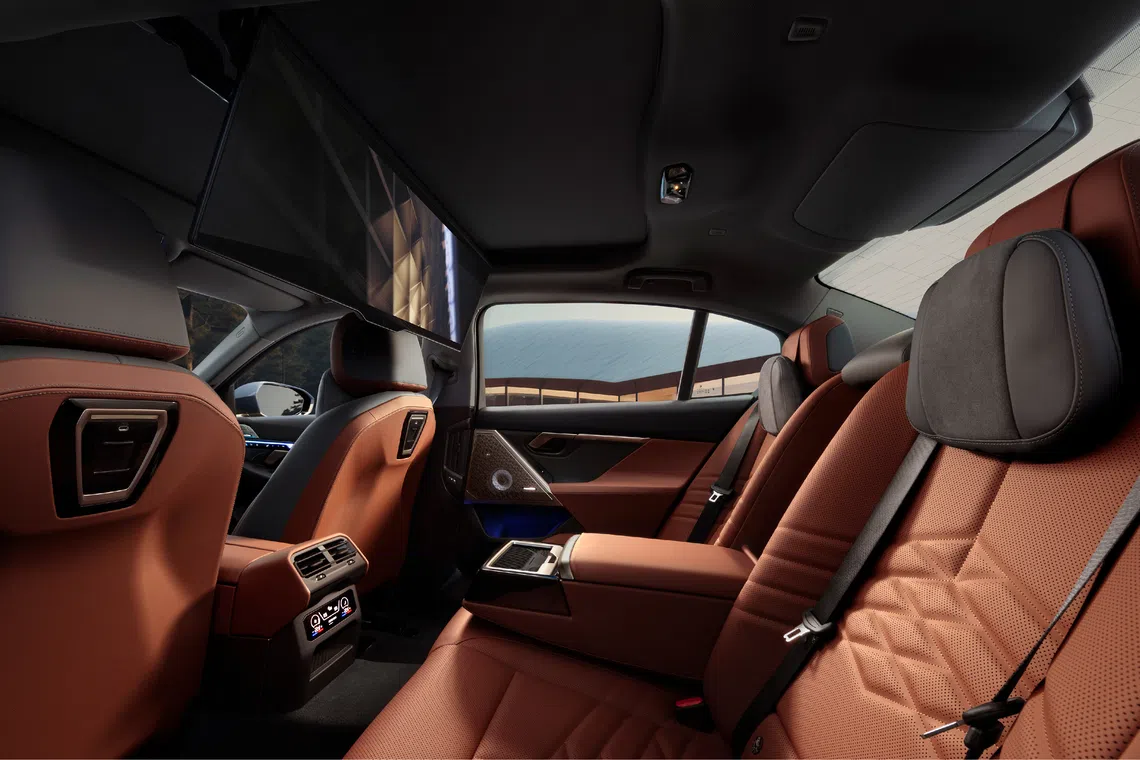Asia is increasingly a trendsetter in car features and design, says the German automaker’s senior vice-president of brand and product management
[MUNICH] In-car theatres, sun protection and an extra 12 cm of legroom – such features may someday make their way out of BMW’s China cars and into the Asia market or beyond.
“Asia is a growth region, but not only in terms of business; it’s also more and more an area where we draw a lot of trends and inspiration,” said Bernd Koerber, senior vice-president of brand and product management at BMW.
He was speaking to The Business Times at the debut of BMW’s new iX3 electric vehicle in Munich earlier this month.
The fully electric sports utility vehicle is the first of the Neue Klasse – New Class in German – series, which features new technology and increased co-operation for localisation in chosen markets.
BMW has already begun tailoring the features and content of its cars for China, its single-largest market.
In the second quarter of 2025, China accounted for about a quarter of the 621,477 vehicles delivered by the BMW group – though this was down from a third of global sales in the year-ago period.
BT in your inbox
Start and end each day with the latest news stories and analyses delivered straight to your inbox.
Centring on the Middle Kingdom

BMW’s efforts include increased co-operation with Chinese players, such as advanced driver assistance systems provider Momenta – for software tailored to the country’s traffic conditions – and Alibaba subsidiary Banma for a speech-based personal assistant.
In the past, the carmaker’s features and content were largely developed in Europe or US. But market-specific collaboration will become more important for BMW to broaden its appeal globally, said Koerber.
“Firstly, I think it’s not necessary for BMW to do everything on its own.
“We sell cars in over 150 markets. To partner locally, to have a better product for customers from Singapore, Malaysia, China just makes sense to us, and it’s also necessary.”
BMW has yet to announce collaborations for Neue Klasse models outside of China. But the company is open to introducing its China-specific features – or even models – to relevant markets in Asean, said Koerber, noting that the region has sizeable Chinese communities. “We are very open to that. It could mean that we basically transfer certain things that we did in China to other markets, and also export cars out of China (to Asia).”
To Asia and beyond

Beyond bringing China features to the Asia market, BMW’s global approach may take cues from Asia, explained Koerber.
“We move beyond just looking at the Asian region as a sales region. It’s also a region where we draw a lot of trends and customer requirements, and then transfer that to other markets.”
Owners in Asia use their cars in different ways from those in Europe, he noted. “In Asia, at least from our figures, you see people spend time in the car, and that’s not only in congestion.”
Asian owners see their cars as a “second living room” rather than just a form of transport – watching television, singing karaoke or simply resting. “This has had a lot of impact (in our vehicle development), not only in terms of infotainment content, but also seat functionality, sun protection, because you watch TV, and so on.”
BMW is already adapting its China-market cars to suit, with 70 per cent of its new infotainment operating system being designed in the country. Customers can also watch content from local streaming services such as iQiyi.
As for design, the China-market version of the 5 Series sedan has an extra 12 cm between the wheels for more legroom, compared to 5 Series models for other markets.
It is also the only 5 Series to have the Theatre Screen, a 31.3 inch display for rear passengers. Globally, this screen is available only in the larger 7 Series luxury limousine.
BMW bills the extra space and large screen as turning the rear passenger area into a “private cinema on wheels”.
Koerber is confident that such moves will keep BMW at the top of the luxury game – even as it and other German carmakers see declining sales compared to relatively new China brands such as XPeng, Zeekr and Xiaomi.
“For example, I think our user interface has the potential to be the industry standard.” This comprises an in-car touchscreen, a virtual heads-up display and a thin, broad screen – what BMW calls “panoramic vision” – that spans the width of the cabin to show important driving information.
Earlier this year, China brand Xiaomi premiered a system with a similar concept and wide-screen layout. But Koerber quipped: “I see that more as a credit than a problem, that Xiaomi took on our idea…that is, for me, saying BMW are still in a position to define new standards.”




